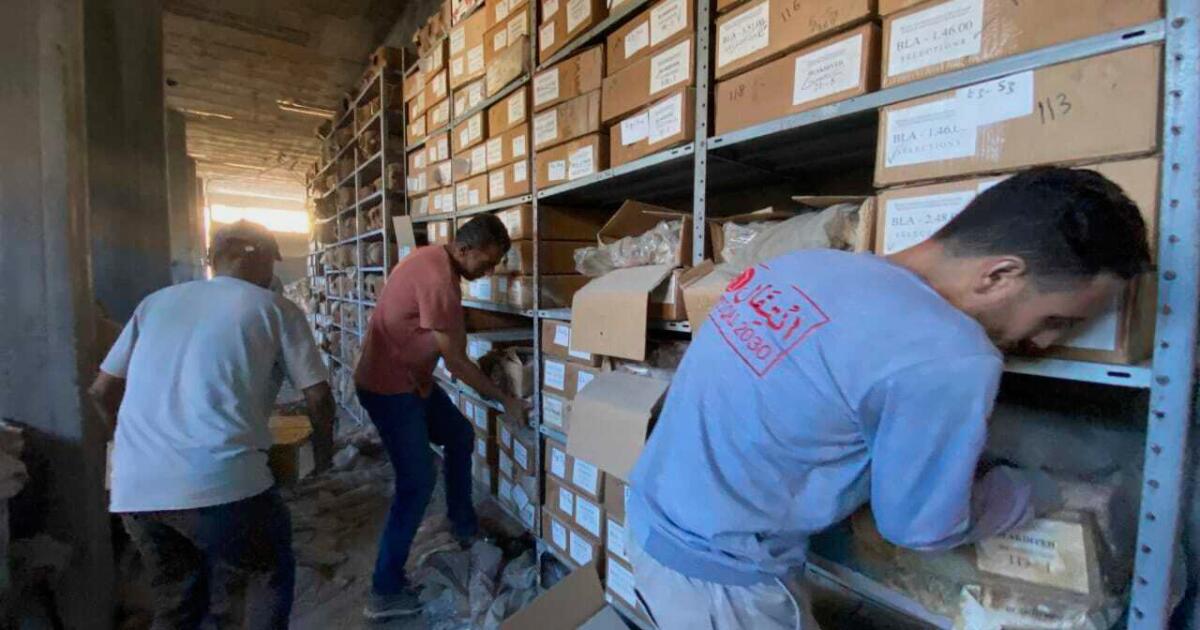
Nine hours of frantic negotiation with the Israeli military. A last-minute scramble to find trucks in a devastated Gaza Strip, where fuel is in short supply. Six hours of frantic packing, carefully stacking cardboard boxes on open flatbed trucks.
With an Israeli airstrike looming, aid workers carried out a last-minute rescue mission to salvage thousands of priceless artifacts from a Gaza warehouse before the building was flattened.
The warehouse contained artifacts from over 25 years of excavations, including items from a 4th century Byzantine monastery designated as a World Heritage Site by the U.N. cultural organization UNESCO, and some of the oldest known evidence of Christianity in Gaza.
The Israeli military said the building housed Hamas intelligence installations and planned to demolish it as part of their expanded military operation in Gaza City.
“It’s not just about Palestinian heritage or Christian heritage, it’s something important to the world heritage here, protected by UNESCO,” said Kevin Charbel, the emergency field coordinator for Première Urgence Internationale, a humanitarian organization that has worked in Gaza since 2009. PUI is a health organization that also works toward the protection of Gaza’s cultural heritage.
Negotiating against the clock
COGAT, Israel’s defense body in charge of humanitarian aid, notified PUI of the demolition plan last week. The warning was triggered by a notification system managed by the international NGOS to let the Israeli military know that a specific area is a sensitive site such as a school, hospital, or warehouses holding humanitarian aid.
Charbel, who is based in Gaza City on a temporary humanitarian rotation, spent nine hours furiously negotiating with the Israeli military for a delay to allow workers to move the artifacts to a safer location.
But the challenge was larger than just holding off the military. As Israel expands its operation in Gaza City, other organizations were in disarray, and no one could locate trucks to transport the artifacts at such short notice.
“Five minutes before I had to accept this was going to be evaporated in front of us, another actor offered us transport,” said Charbel. PUI worked with the Latin Patriarchate of Jerusalem to move the artifacts to a safer location in Gaza City that is not being disclosed for security reasons.
Dozens of ancient archaeological sites have been found in Gaza, including temples, monasteries, palaces, churches, mosques and mosaics. Many of them have been lost to urban sprawl and looting. UNESCO is struggling to preserve some of those that remain. Some of the sites date back 6,000 years, when Gaza was a central stop on trade routes between Egypt and the Levant, and the emergence of urban societies began to transform farming villages.
The artifacts rescued this week include ceramic jugs, mosaics, coins, painted plasterwork, human and animal remains, and items excavated from the Saint Hilarion Monastery, one of the oldest known examples of Christian monastic communities in the Middle East, according to UNESCO.



